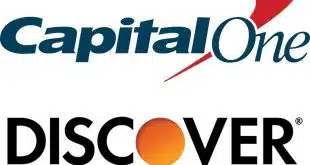Efforts to get EMV chip cards into the wallets of U.S. consumers may be paying off. Some 52% of cards presented to merchants in the weeks following the Oct. 1 liability shift bear a chip, says CardFlight Inc., a mobile point-of-sale provider, in the debut of its EMV Migration Tracker.
Rather than relying on surveys, CardFlight analyzed data on more than 100,000 transactions by U.S. merchants using CardFlight’s gateway from Oct. 15 to Dec. 4.
Expectations are the number of EMV cards will continue to increase over the next year, especially as more issuers provision cardholders with EMV debit cards.
In October, the report found that 49% of cards had a chip, compared with 54% in November. “There’s a clear trend here,” Derek Webster, CardFlight founder and chief executive, tells Digital Transactions News. “More than half of the cards have chips in them.” That should motivate merchants, he says. In general, they’ve had exposure to the liability shift from half of the cards presented to them, he says. The liability shift places the costs of fraud committed with counterfeit cards on the party least prepared to accept EMV transactions.
And that means many merchants will face continuing, growing exposure, Webster says. “It’s not like this number will be 56% in April. It will probably be in the 60s or 70s.”
This also indicates that the cardholder component to the EMV migration, which also includes equipping merchants and getting the payments system in line, is ready, Webster says. While processors and acquirers prepped for EMV well in advance of Oct. 1, some merchants—especially smaller ones—are just now preparing for chip transactions. “We know the merchant doesn’t have 50% capability in accepting EMV transactions,” Webster says.
CardFlight also analyzed the brand association of the chip cards. Some 83% of the American Express Co. cards had a chip, compared with 53% of Visa Inc., 42% of MasterCard Inc., and 40% of Discover Financial Services cards.
Long known as a card for business travelers, AmEx began issuing EMV chip cards with PIN authentication more than 10 years ago, and began issuing chip-and-signature cards in 2013 to U.S. cardholders.
CardFlight’s data also found that some merchant types see chip cards more than others. Among sporting goods retailers, 73% of the cards presented at the checkout have chips, followed by parking vendors, 72%, and transportation services, 65%.
Merchants less likely to see a chip card are fast food restaurants, 26%, and bakeries and women’s clothing, both 33%.
States with the highest percentage of chip cards include Hawaii, 63%, Florida and New York, each at 59%. States with the lowest rates include Mississippi, 11%, and Maine and South Dakota, each at 20%.




